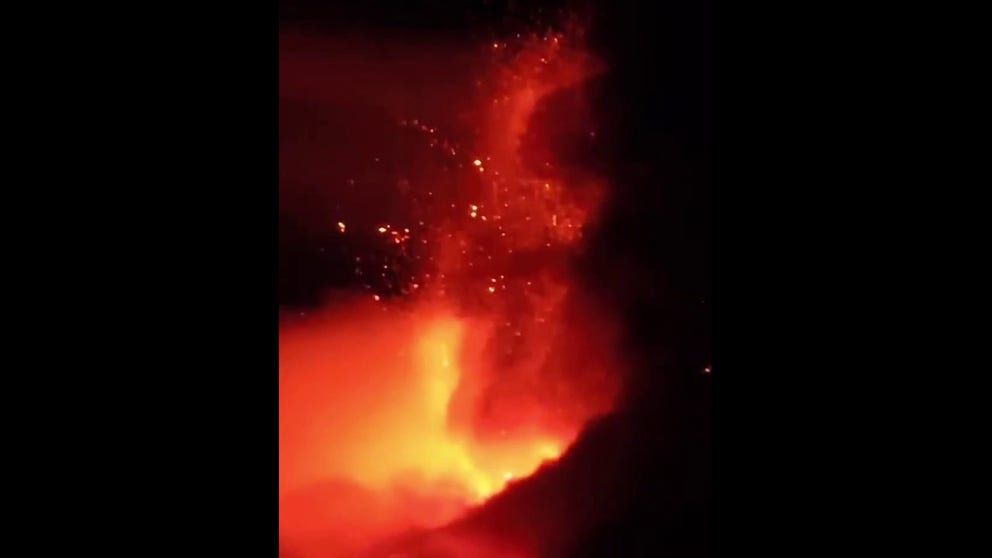Italy's Mount Etna volcano spews lava fountain into the sky above Sicily
Italy's National Institute of Geophysics and Volcanology (INGV) said the eruption began on Sunday, sending a lava fountain into the air. The eruptive column is estimated to be more than 14,700 feet above sea level.
Mount Etna volcano eruption ignites sky above Italy
Italy's Mount Etna volcano began erupting on Nov. 12, sending lava into the night sky. The volcano eruptive column is estimated to be about 14,700 above sea level. (Video credit: @bruno.wski via Storyful)
CATANIA, Italy -- The Mount Etna volcano began erupting again on the island of Sicily Sunday, sending ash miles into the sky and raining down on Catania.
Italy's National Institute of Geophysics and Volcanology (INGV) said the eruption began on Sunday, sending a lava fountain into the air. The eruptive column is estimated to be more than 14,700 feet above sea level.
Since early October, Etna has been showing signs of eruptive activity in the southeast crater, according to INGV. Activity began increasing in the past few days, with explosions occurring every second before the volcano erupted again.
After sunset, the INGV writes that even with heavy cloud cover, "the populations of all of eastern Sicily were treated to the spectacle of the lava fountains, which at times were visible among the clouds."
Loud booms and explosions could be heard from the volcano as the eruption continued.
WHAT HAPPENS BEFORE A VOLCANO ERUPTS?
Located in the coastal city of Catania, Etna is the largest of Italy's three active volcanoes and the largest active volcano in Europe, according to the European Space Agency.
Etna's latest eruption sent an ash cloud over the towns of Milo and Zafferana Etnea, raining down ash.
WHAT ARE THE 4 CLASSIC TYPES OF VOLCANOES?
In August, another eruption from Etna closed the Catania Airport because of ash spewing from the volcano and creating flight hazards. Volcanic ash is a significant hazard for aircraft, and giant plumes of ash sent into the atmosphere can disrupt flights internationally.
Etna isn't the only volcano in Europe earning headlines this week.
In Iceland, the town of Grindavík was evacuated amid the "significant likeliness" that a volcano eruption could happen within days. More than 900 earthquakes were recorded on Monday alone, according to the Icelandic Meteorological Office.




